Here is our expert guide to manta rays, including how to identify, how they feed and natural habitat.
What is a manta ray?
Manta rays are cold-blooded fish with flat diamond-shaped bodies. There were thought to be just one species of manta ray, but a new distinct species was discovered in 2008.
How many species of manta ray are there?
There are two extant species of manta ray which differ in their appearance and their preferred habitat. The larger species is the giant oceanic manta ray (Manta birostris) and the smaller species is the reef manta ray (Manta alfredi). They are very closely related to the nine extant species of mobula ray.
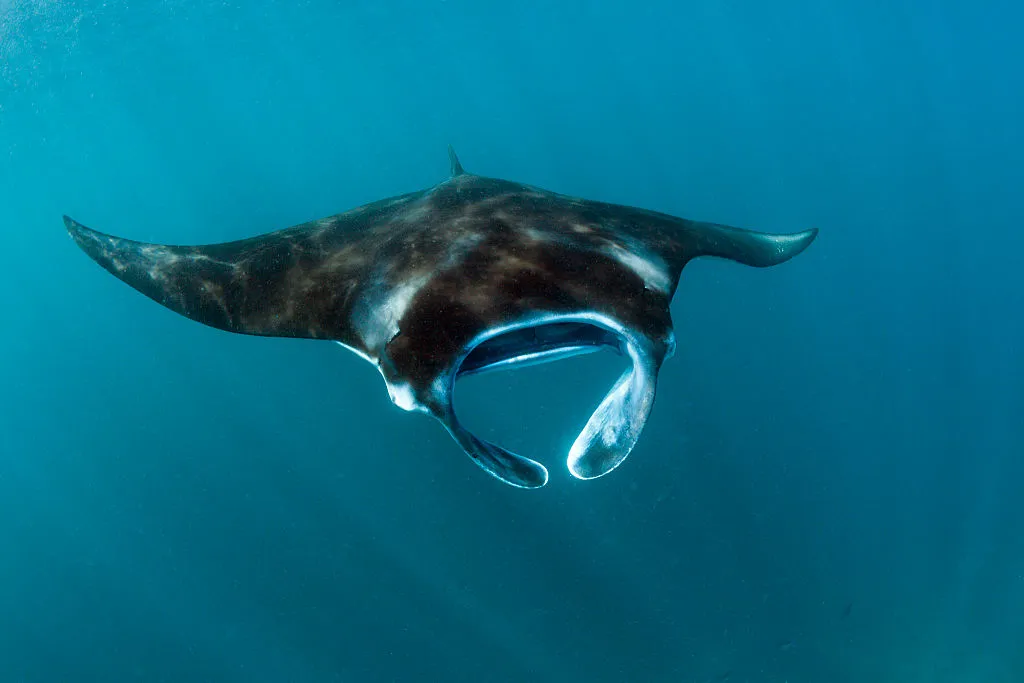
What does manta ray mean?
A manta ray is also sometimes called a 'devil fish' because of its two horns. In Spanish the word 'manta' can mean blanket, coat or shawl.
How big is a manta ray?
The giant manta ray can grow up to seven metres from the tip of each wing but are usually around four and a half metres.
Reef manta ray are smaller and are usually between three and three and a half metres but have been recorded up to five metres.
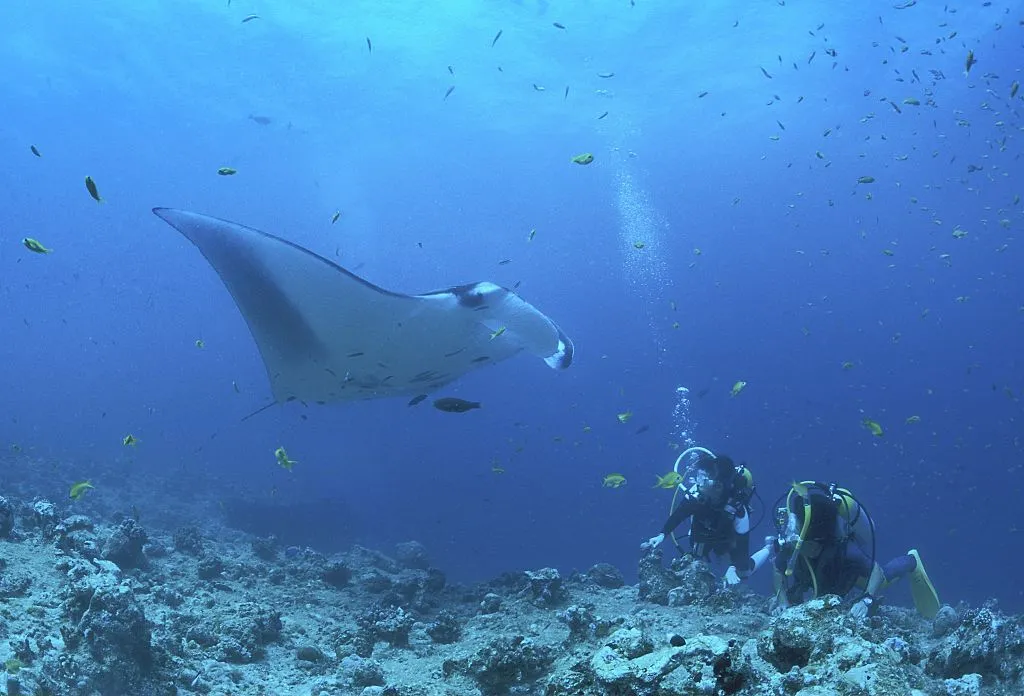
How long do manta rays live?
They are believed to live for at least 50 years and take up to ten years to reach sexual maturity.
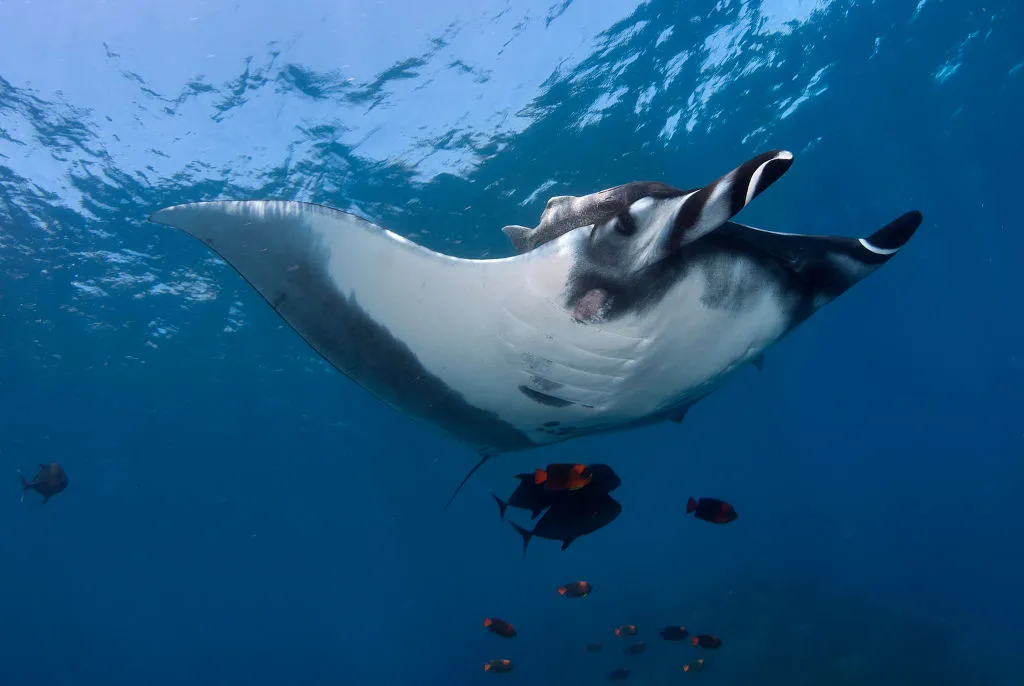
What do you call a group of manta ray?
Manta rays are sometimes seen on mass, for example when feeding, they are then known as a squadron of manta ray.
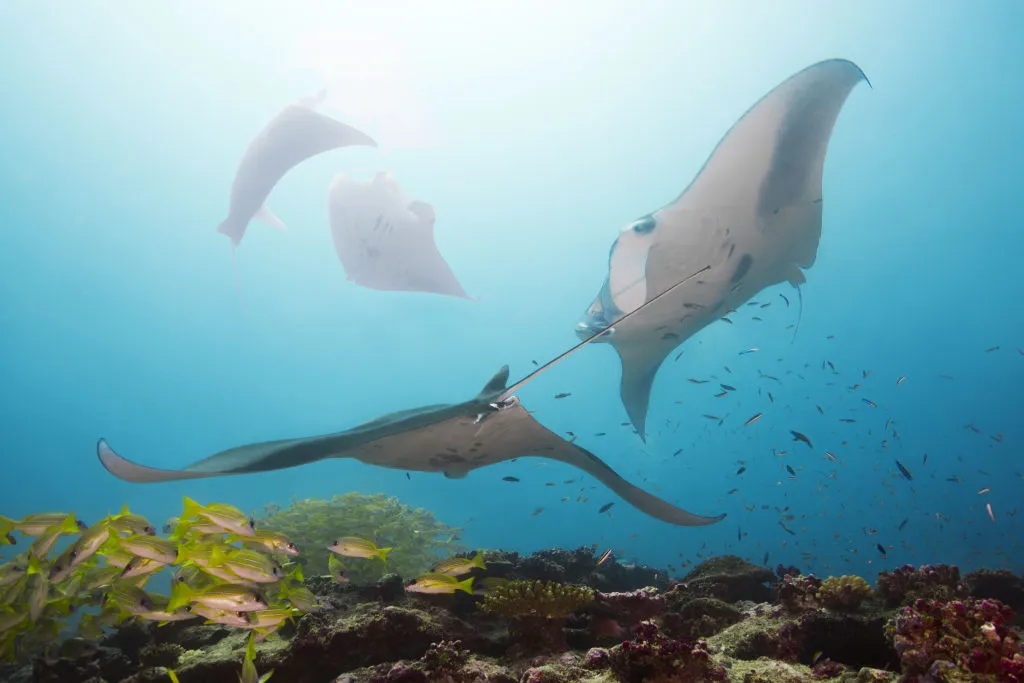
Where do manta ray live?
Reef manta ray can be found in coastal areas in tropical and subtropical waters mostly in the Indo-Pacific.
The giant manta ray, on the other hand, is a circumglobal species which can be found in waters right around the equator spending the majority of its time far from land.
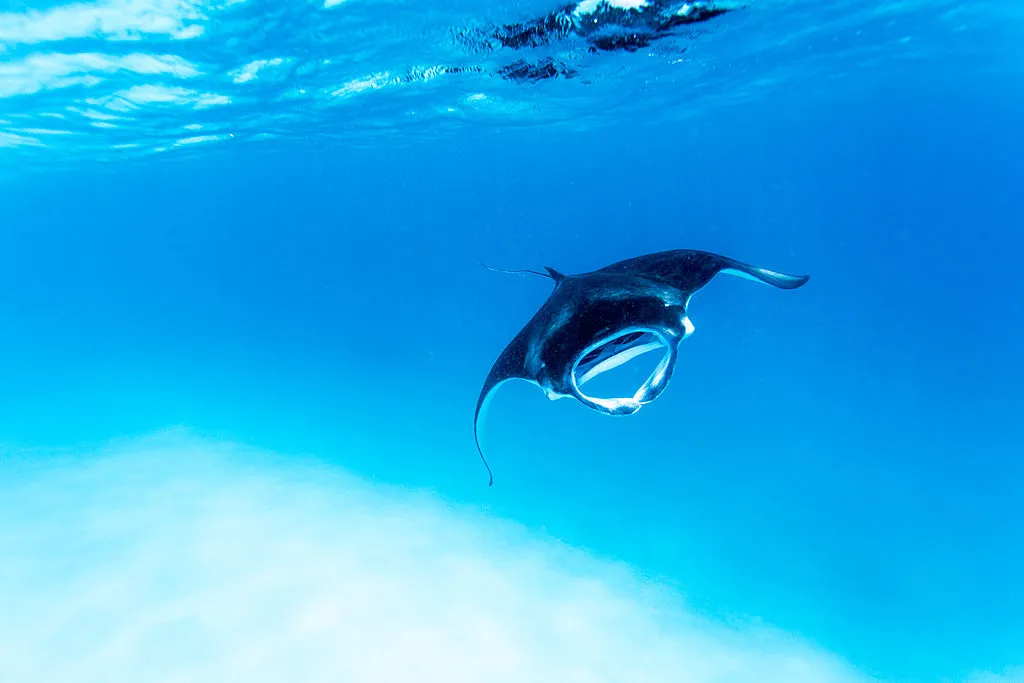
What do manta ray eat?
Both species have been observed filter feeding on large quantities of zooplankton however, research suggests that the giant manta ray also hunts for fish and this may be their prominent food source.
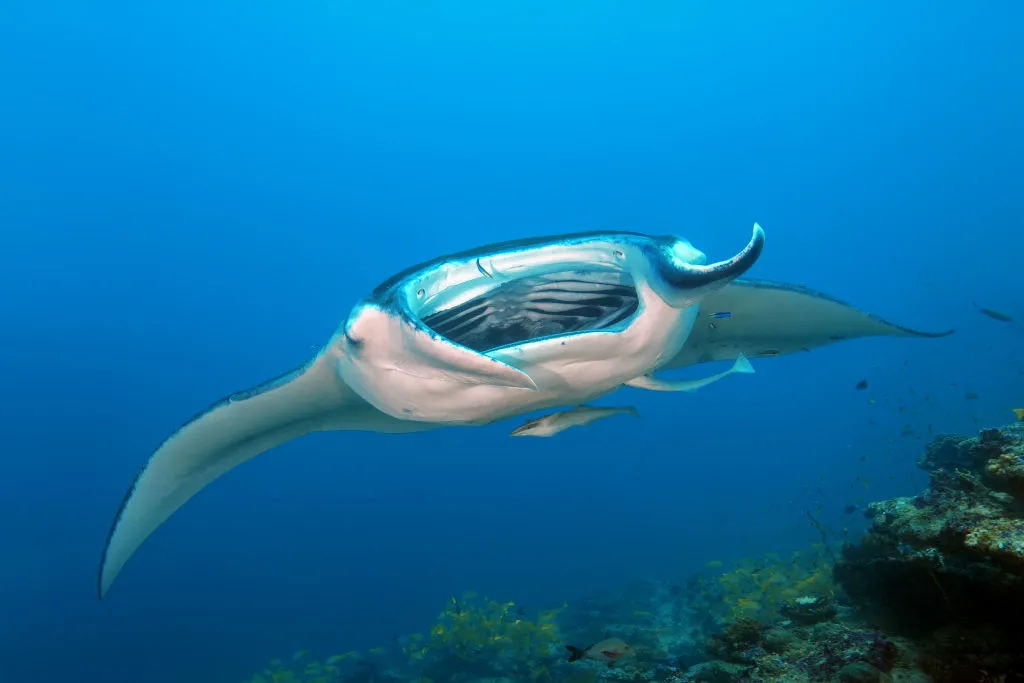
How do you tell the difference between giant manta and reef manta rays?
The main difference between the two species is the size of adults however if the ray is young this can bring confusion. The only way to be sure is by comparing colour pattern. Both have dark dorsal sides but the white lines on them make different shapes, the pattern on reef manta ray produces a Y shape whereas the giant manta ray makes a T.

How deep do manta ray swim?
The giant oceanic manta ray has been spotted at depths of 560m but we don’t know everything about them so it may be deeper.
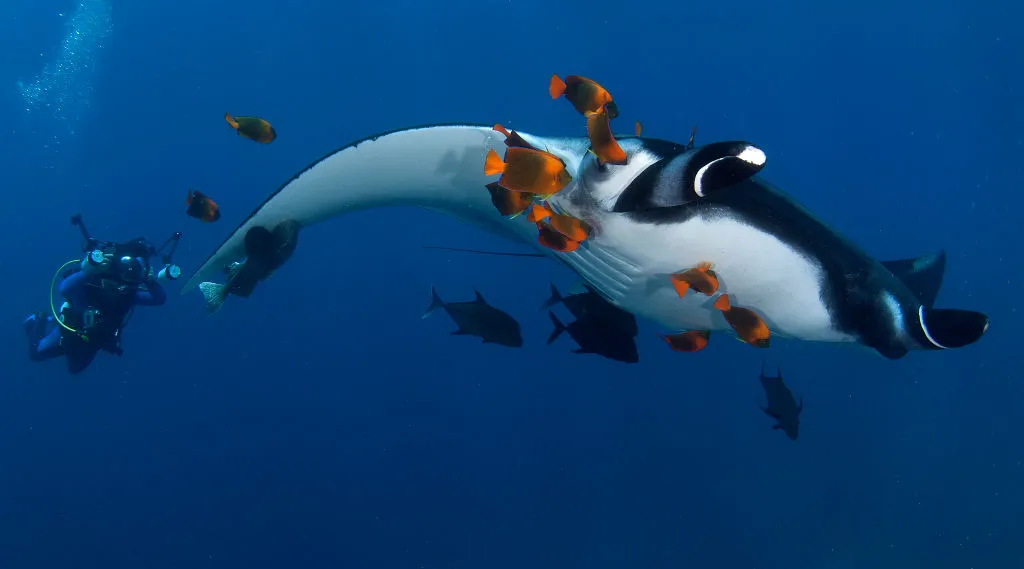
How fast do manta ray swim?
Both manta ray species have escape speeds of up to 24km per hour.
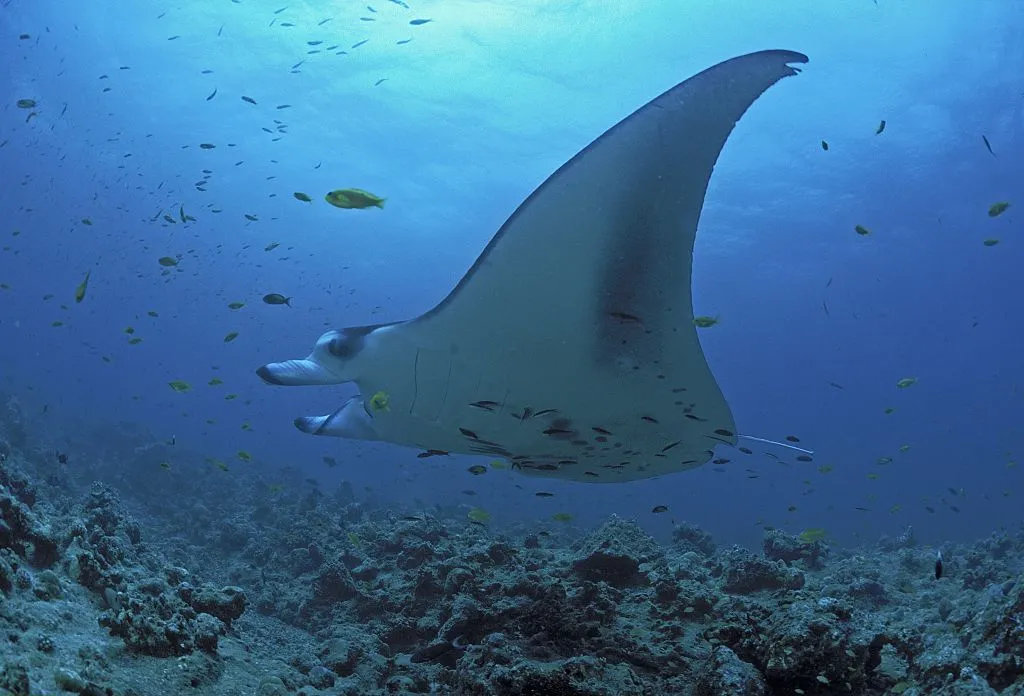
How many babies do manta ray have?
Manta rays give birth to a single pup every two to five years. Their gestation period is believed to be around a year long.
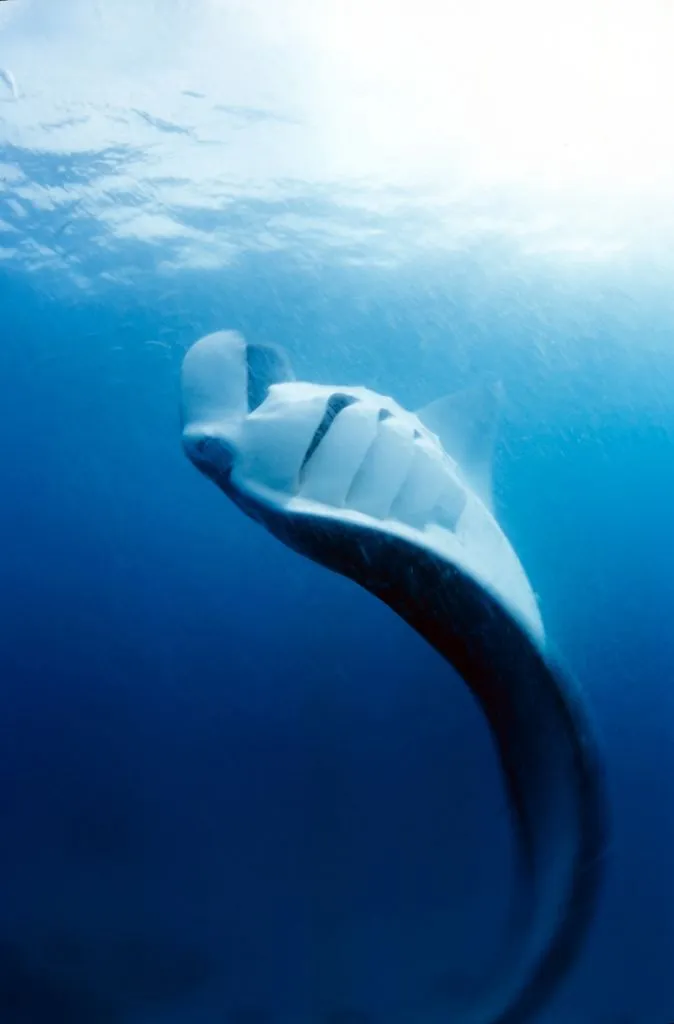
Do manta rays have any predators?
Due to their large size and speed, they have very few natural predators, these include large sharks and killer whales.
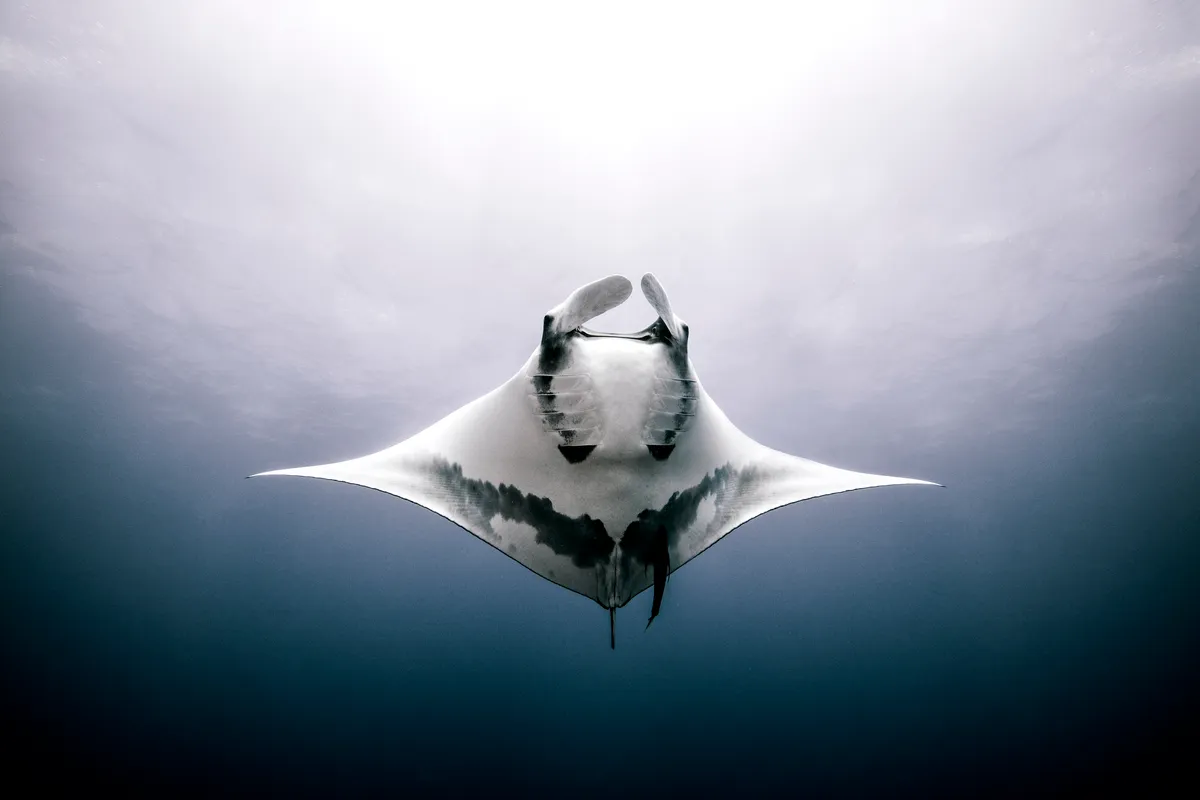
Why do manta rays jump?
The short answer is, we don’t know! Although there are many theories as to why they jump out of the water, an act known as breaching, scientists haven’t yet worked out why they do it.